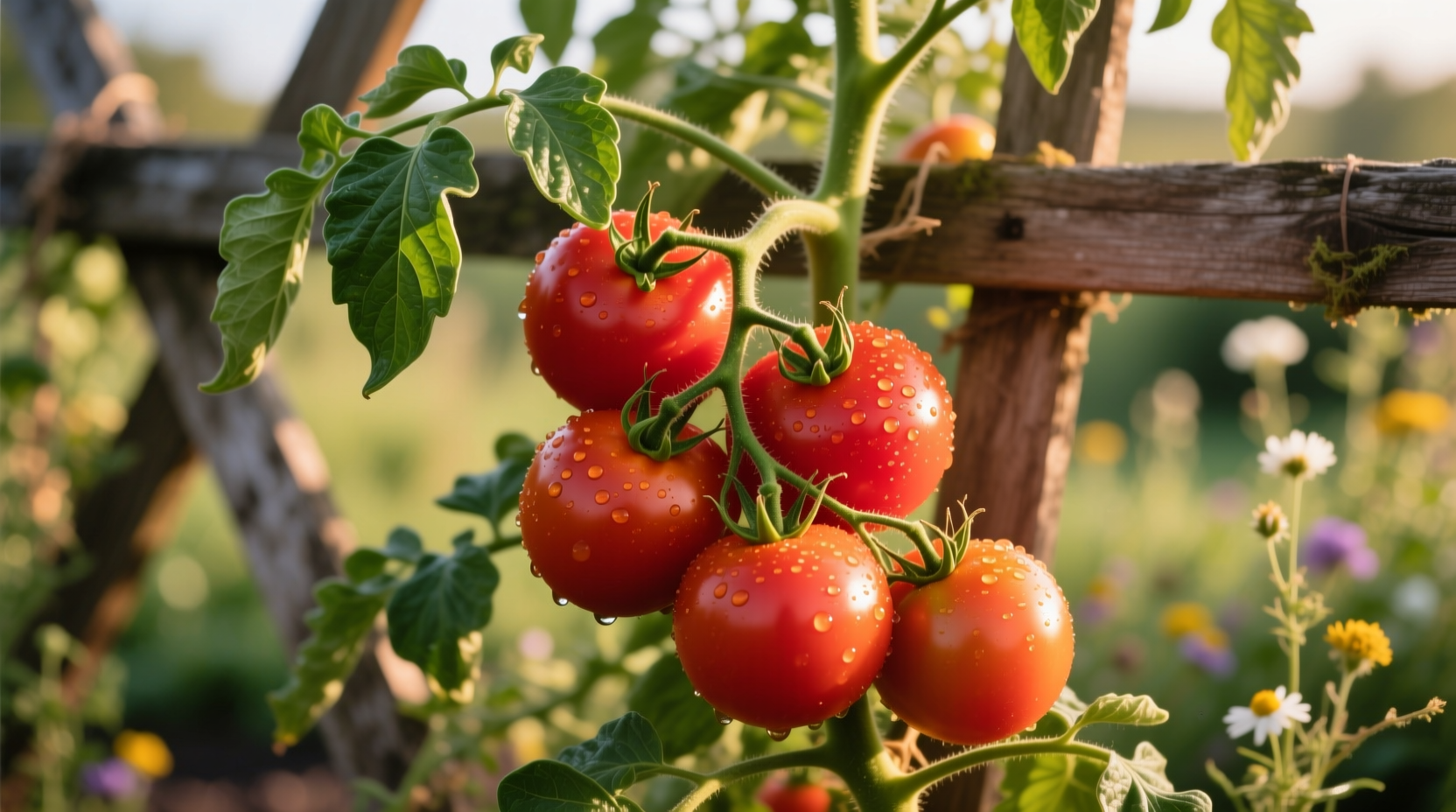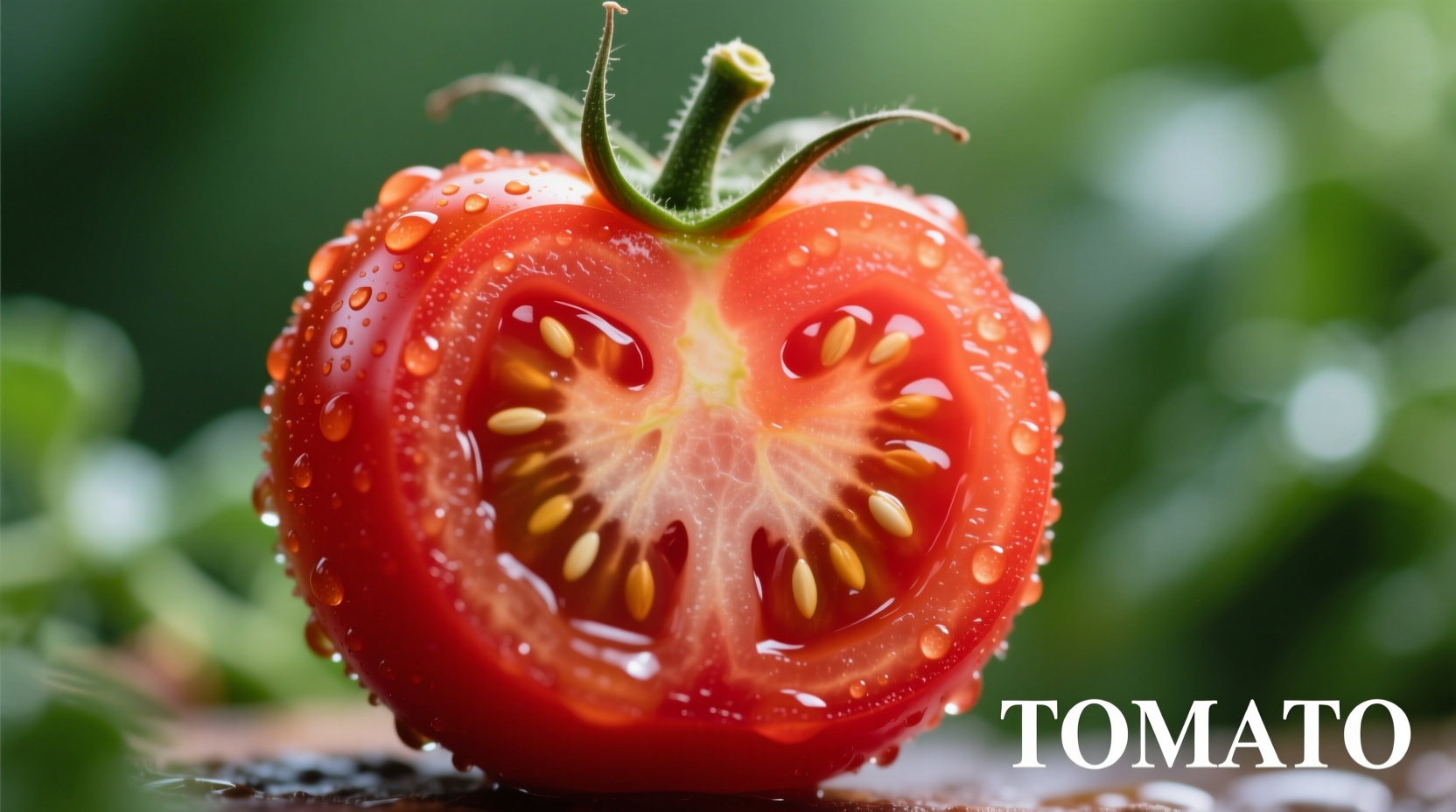Botanically, a tomato is classified as a fruit because it develops from the ovary of a flowering plant and contains seeds. However, in culinary contexts and U.S. legal classification, tomatoes are treated as vegetables due to their savory flavor profile and common usage in main dishes rather than desserts.
The Great Tomato Debate: Science vs. Kitchen Reality
When you bite into a juicy tomato, are you eating a fruit or a vegetable? This question has sparked debate for over a century, confusing home cooks, gardeners, and even Supreme Court justices. Let's cut through the confusion with clear facts you can use in your kitchen and garden today.
What Science Says: The Botanical Classification
From a botanical perspective, tomatoes unequivocally qualify as fruits. In plant biology, a fruit develops from the flower's ovary after pollination and contains seeds. Tomatoes form from the fertilized ovary of the tomato flower and house numerous seeds—meeting the scientific definition perfectly.
"Botanically speaking, tomatoes are fruits, just like cucumbers, peppers, and eggplants," explains Dr. Linda Chalker-Scott, an extension horticulturist at Washington State University. "These plants all belong to the nightshade family and share the same fruit structure."
Why Chefs and Cooks Treat Tomatoes as Vegetables
Despite the scientific classification, culinary professionals consistently categorize tomatoes as vegetables. This practical distinction stems from flavor profile and usage patterns:
- Flavor profile: Tomatoes have low sugar content compared to traditional fruits
- Culinary application: Used in savory dishes rather than desserts
- Cultural tradition: Historically grouped with other garden vegetables
This culinary classification affects how we prepare and pair tomatoes in recipes. You won't find tomatoes in fruit salads or cobblers, but they're essential in sauces, stews, and vegetable medleys.
| Classification System | Tomato Status | Key Reasoning |
|---|---|---|
| Botanical | Fruit | Develops from flower ovary and contains seeds |
| Culinary | Vegetable | Savory flavor profile and usage in main dishes |
| USDA Nutrition | Vegetable | Grouped with vegetables for dietary guidelines |
| U.S. Legal (1893) | Vegetable | Nix v. Hedden Supreme Court decision |
The Supreme Court Decision That Changed Everything
In 1893, the U.S. Supreme Court case Nix v. Hedden settled a tariff dispute by legally classifying tomatoes as vegetables. The court ruled that while tomatoes are botanically fruits, they're "usually served at dinner in, with, or after the soup, fish, or meats which constitute the principal part of the repast, and not, like fruits, generally as dessert."
This landmark decision, documented in 149 U.S. 304 (1893), established that common usage—not scientific classification—determines food categorization for legal and tariff purposes. The ruling still affects how tomatoes are treated in U.S. agricultural policy today.

How This Classification Affects Your Cooking
Understanding this dual classification helps you make better culinary decisions:
- Gardening: Plant tomatoes with other fruiting plants (peppers, eggplants) rather than root vegetables
- Nutrition: Count tomatoes toward your vegetable servings in dietary guidelines
- Cooking techniques: Use acid-balancing methods appropriate for fruits when making sauces
- Preservation: Apply fruit preservation techniques due to their acidity level
The USDA's FoodData Central database categorizes tomatoes with vegetables for nutritional guidance, reflecting their practical dietary role despite the botanical classification.
Common Misconceptions About Tomato Classification
Several myths persist about tomato classification:
- Myth: "Tomatoes were reclassified as vegetables to avoid fruit tariffs"
- Fact: The Supreme Court case specifically addressed existing tariff classifications based on common usage
- Myth: "Only Americans consider tomatoes vegetables"
- Fact: Culinary traditions worldwide treat tomatoes as vegetables regardless of scientific classification
- Myth: "Botanists disagree about whether tomatoes are fruits"
- Fact: The botanical classification is universally accepted among plant scientists
Practical Takeaways for Home Cooks and Gardeners
Here's how to apply this knowledge in your daily life:
- When following recipes, treat tomatoes as vegetables for pairing and seasoning purposes
- In your garden, provide tomato plants with the same care as other fruiting plants
- When preserving tomatoes, use techniques appropriate for acidic fruits
- For nutrition tracking, count tomatoes toward your vegetable intake
- When discussing with fellow gardeners or cooks, clarify whether you're speaking botanically or culinarily
"The tomato classification debate isn't about right or wrong," notes Sarah Johnson, culinary historian. "It's about recognizing that different contexts require different classification systems. Understanding both perspectives makes you a more informed cook and gardener."











 浙公网安备
33010002000092号
浙公网安备
33010002000092号 浙B2-20120091-4
浙B2-20120091-4